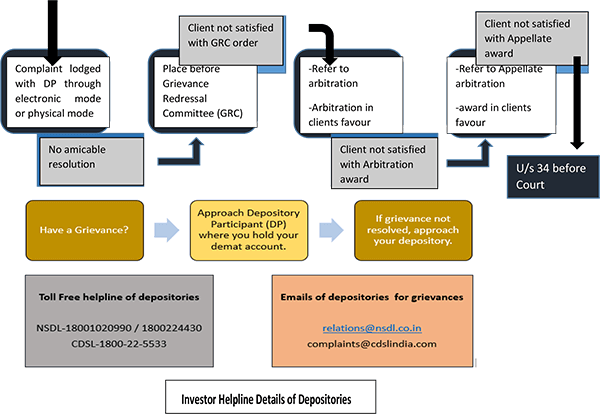In today’s scenario, doing just a job or a single business cannot provide you with the financial security you are seeking. So, what could be done so that you can do your regular job or business and still make more money? Well, that’s Investing.
Investing is all about using your money to make more. Trading is one of the fastest ways to do that. But trading should be done with strategies, you cannot do trading without a proper plan, you will lose all your money and maybe that’s why beginners or people who don’t know about it in detail fear putting their money into trading.
Trading is also scary due to the volatile nature of the market. The market keeps going up & down and so is the money that people put in different companies. But some risks when taken calculative with proper strategies can be beneficial and this is one such risk.
Are you ready to tackle the journey of fluctuating markets? In today’s changing environment, trading can seem demanding, uncertain and risky. However, by using strategies, you can use the same volatility of the market as an opportunity to make a profit.
In this article, some tried and tested trading strategies will be shared that can help to deal with the volatility of the market. Whether you’re a trader or a newcomer to investing, these strategies will give you the confidence, expertise and abilities needed to understand the highs and lows of the market.
The Value of a Trading Strategy in Volatile Markets
The value of the trading strategy is more than we can think. Ask the experienced investors of the market. When you build a strategy, you automatically get a plan in your hand and this gives clarity to understand what you want and what can you expect inevitably clarity gives confidence and confidence is very important when it comes to trading in volatile markets.
History shows and experience talks prove that investors without a strategy in this volatile market get their money and themselves sink. Without a well-built strategy, the investors may make the decision impulsively and lose their money. A well-built trading strategy gives the discipline that is required to sustain this volatility of the market.
Fundamental Analysis in Volatile Markets
The market is the home of money. It’s surrounded by different factors like the economy, environment, social situations, geopolitical scenarios and more that affect it and create turbulence or volatility in the market.
So, it becomes important here to keep analysing the different aspects of the market from time to time to make sure that the individual makes the right decision when it comes to knowing the inherent worth of assets through fundamental analysis. Fundamental analysis is often linked to long-term investing, although it can also be used for trading in volatile markets.
Along with other factors, news and economic developments affect significantly the market scenario and asset prices during volatile times. With the help of this Fundamental Analysis, traders can easily find opportunities in the volatile market based on how the market responds to these factors.
Fundamental analysis also helps traders to figure out an asset’s value about its present price and to predict an asset’s long-term benefits. Understanding the root causes of market volatility can help traders set up their positions to gain profit from future price changes or market fluctuations.
Technical Evaluation in Changing Markets
To predict price shifts in the future, technical analysis focuses on the analysis of price trends, patterns, and indications. Technical analysis can be especially helpful in volatile markets.
Volatility indicators, such as the Bollinger Bands or the Average True Range (ATR), are a common technical analysis tool for volatile markets. These indicators give traders information about an asset’s volatility and can be used to pinpoint possible entry and exit opportunities as well as times when volatility is at its highest.
Examining chart patterns like triangles, flags, and head and shoulder patterns is another component of the analysis that can be helpful in volatile markets. These trends may suggest reversals or breakouts giving opportunities to the traders to gain profit from the unpredictable price movements.
Techniques for Risk Management in Volatile Markets
Great prize always comes with a great cost. And, since there is a greater chance of facing large losses while investing in volatile markets, risk management becomes important here.
“Position size” is a popular risk management strategy in which traders commit a certain portion of their capital to each trade. Furthermore, in volatile markets, diversification becomes very important when it comes to risk management. Investments spread over various businesses, assets, or geographical areas can significantly help to lessen the impact of unfavourable price fluctuations on a trader’s overall portfolio, that’s why for all investors it is always suggested to bring diversification in their portfolio.
Day trading in volatile markets
Short-term trades get executed within a single trading day in day trading. Day trading can be especially profitable in volatile markets because there are many potentials for quick profits due to the rapid price swings.
Strategies for Swing Trading in Volatile Markets
Swing trading is one of the well-known trading strategies. Taking advantage of quick price fluctuations within longer-term trends, swing traders hold their holdings for just a few days to a couple of weeks.
Trend following is a common swing trading tactic for volatile markets. The goal of trend watchers is to detect and capitalise on well-established market patterns, regardless of temporary volatility.
“Mean reversion” is another swing trading technique for volatile markets. Traders who believe in mean reversion predict that prices will ultimately return to their mean or average value after fluctuating from it.
Trading Strategy: Backtesting and Optimisation for Volatile Markets
Backtesting is one of the common and sought-after processes for assessing any trading strategy’s profitability and performance using the previous data.
Backtesting can help traders understand the predictability of the market by assessing the performance of their strategies in various market scenarios and pinpointing possible areas for development.
Conclusion:
Trading in volatile markets is a blessing in disguise. If you understand the market, the factors associated with it, and the root causes for volatility in the market, you can easily surf on the waves of volatility and make a profit.
Also, traders need to be aware of the possible benefits and risks associated with different strategies, as a single strategy cannot help you in every situation. So, using the right strategy at the right time becomes important here. Also, it’s important to keep reviewing the strategies and plans as per the situation of the market to keep trading and getting profits.




